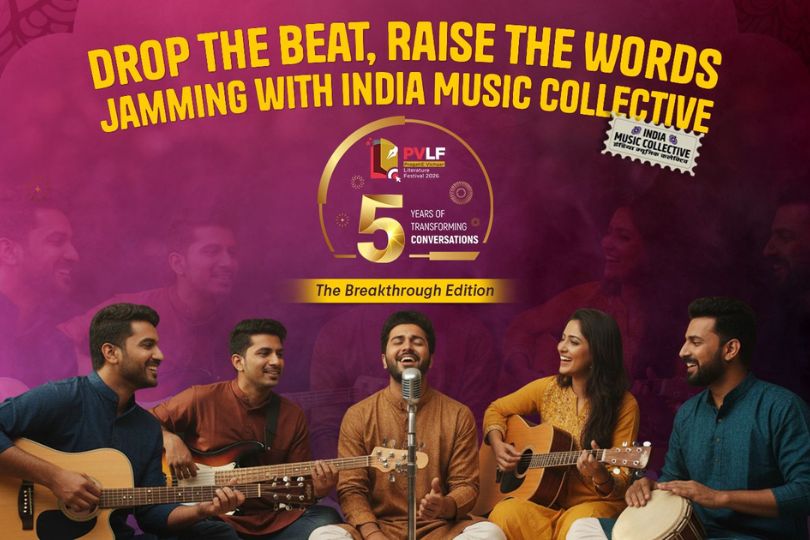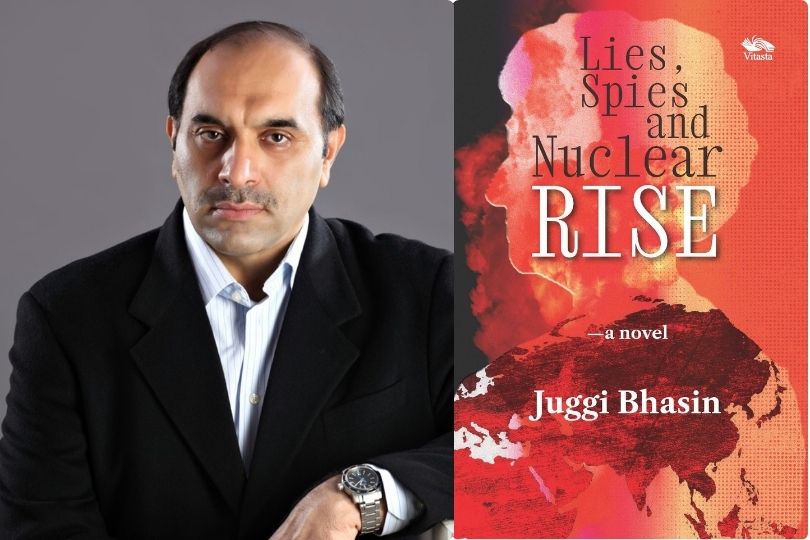Interview with Shals Mahajan, author of “Reva and Prisha”
As an adult writing stories for children (but which I hope a lot of adults will read too), the question foremost in my mind is the interaction between adults and childrenon May 26, 2023
_(811_×_540_px).jpg)
Shals Mahajan is a writer, layabout, part feline, somewhat hooman, a genderqueer fellow who lives in Bombay, but mainly in their head. They like reading, writing, and talking to the koel and the copperpod tree on which the koel lives. And rain. Their other books include Timmi in Tangles, Rizu, and No Outlaws in the Gender Galaxy.
Frontlist: What inspired you to write the book "Reva and Prisha"?
Shals: It is difficult to pinpoint when a book starts, but for this book, I remember clearly waking up on December 31st, 2017, with these two kids chatting away in my head. They were so clear to me—Reva and Prisha—with their playfulness and constant conversation, and I was fascinated by them. So, I did something very unusual for me: I wrote three stories that very day. Usually, I am a painfully slow writer and wait for ideas to slowly work their way into words. But these two people were utterly and completely there in my head, continuously telling me about their lives. Then a few more stories came later. But by then, we were good pals. So, the short answer is that Reva and Prisha themselves inspired these stories.
Frontlist: In "Reva and Prisha," the normalcy of queerness is beautifully portrayed in a children's illustrated book. How did you approach this aspect of the story?
Shals: I think queerness, the daily living of it as well as the politics of it, is so much a part of me and my life that I do not have to sit and consciously work towards it being part of my work and writing. It is something that is there in everything I do; it is my everyday. So, I knew from the very first story that Reva and Prisha were twins and had two mothers. Of course, once the stories and characters were there, I also had to make some decisions. These were more about the location of the family—class, caste, religion, where they lived, and what their lives were like. So while I knew that both Runu and Pritam were professionals, I chose a more middle-class urban milieu for them. I chose to imagine a school where two mothers can go and talk to the school authorities, and they would be open to such families. Of course, these exist, but in very few places. At the same time, since it was an inter-religious relationship, I also chose to address that in this book, as you can see in the last story.
Frontlist: How did you define the representation of the Sahil family, and did you form a personal emotional connection with them as you brought them to life on the pages?
Shals: Oh, absolutely! When I write, I am in a state of love almost with the people and their lives. They occupy my head, as intense love does, and so I am in constant conversation with them. There is both an immediacy to their being as well as a connection, so slowly I come to know more about them. And this is when I begin to write. As I write, their lives and beings take even more shape. I begin to see them, and by the time I have written the stories, I have a very good idea of how they look, how they behave, how they talk, and so on. Most of all, their interaction with each other grows, and I live in a state of utter fascination. It is a very joyful state when I can do so. But during the long periods when I do not write, there is separation, longing, sadness, a sense of loss, of betrayal, of abandonment, and all that too. Yet sometimes, the characters are done telling me stories, so all I can do is wait to see if they will come back into my life at some other time.
Frontlist: "Reva and Prisha" addresses social and cultural issues simply yet effectively. What message or lasting impact do you hope your book will have on young readers who engage with its themes and story?
Shals: As an adult writing stories for children (but which I hope a lot of adults will read too), the question foremost in my mind is the interaction between adults and children. We live in a world structured completely by adults with a strong agenda to make children fit to live in this world. There is a constant emphasis on teaching them right from wrong, good from bad, and so on. In this project, adults, whether at home, at school, in communities and neighborhoods, and in all state and social institutions, are also teaching them our biases, hatreds, and prejudices, and teaching them to maintain the hierarchies that we follow. And while doing so, adults have absolute power in the unequal relationship with children and very little self-reflection.
So, for me, the most important question is how can this relationship be democratized? How can the interaction between adults and children be more equal, more respectful, and more open? I am not saying I start by thinking of this when I write, but having written a few books, I see that this is what I am trying to imagine in small but significant everyday interactions, in the hope that my readers see it too, respond to it, and take it with them.
Frontlist: Can you provide insights into the creative process of illustrating the characters in "Reva and Prisha"? How did you ensure that the illustrations complemented the storyline and added a deeper layer of meaning and resonance to the narrative?
Shals: As I mentioned earlier, by the time I am done writing most of the stories, I know the people in them quite well—their looks, mannerisms, expressions—and I have a clear understanding of how they live and interact. However, I do not have even an iota of drawing skill. So, I start creating word pictures—very extensive ones. I share these notes with my editor and illustrator. Then, it becomes a collaborative process where the three of us work to bring text and illustration together. With "Reva and Prisha," I was fortunate to have Sushmita Chatterjee as my editor and Lavanya Karthik as the illustrator, and they truly embraced my ideas, making the text and images work seamlessly. We discussed even the minutest details, and Lavanya brought her own creative expression to enhance the illustrations. In this book, I believe we have been able to truly bring to life what I had imagined on paper.
Frontlist: What experiences or influences have shaped your passion for children's storytelling as an author?
Shals: I think the answer is simply that I love reading. I am essentially a reader of books who sometimes writes. So much of what I have learned, what I have lived, and the emotions I have experienced—so much of my life—is intertwined with books, in books, and around books. Writing, to me, was a continuation of my fascination with words, language, stories, and the wonder that such a thing as a book exists. As a child, I could never find a connection with humans outside my family. For me, books, plants, trees, animals, birds, sand, and rain were my world. As I grew older and reached my twenties, I found people other than my parents and sister whom I could connect with and have endless conversations with. I found people who were as fascinating as books, if not more. This also changed me and shaped my being. It was around the time when real-life people became a part of my inner world that the space to write expanded. I am still learning how this works, but it is precisely the presence and company of people around me helps populate my head with characters like Reva and Prisha, who I do not know outside my head. And with their presence, writing happens. And surprisingly enough, even though I barely interact with children, they often come and chat with me in my head. And that makes me a children’s author. I must confess though, that my head is a very silly place, and that leaks into the writing too.



.jpg)






.jpg)

.jpg)
.jpg)

.jpg)

.jpg)

.jpg)










Sorry! No comment found for this post.